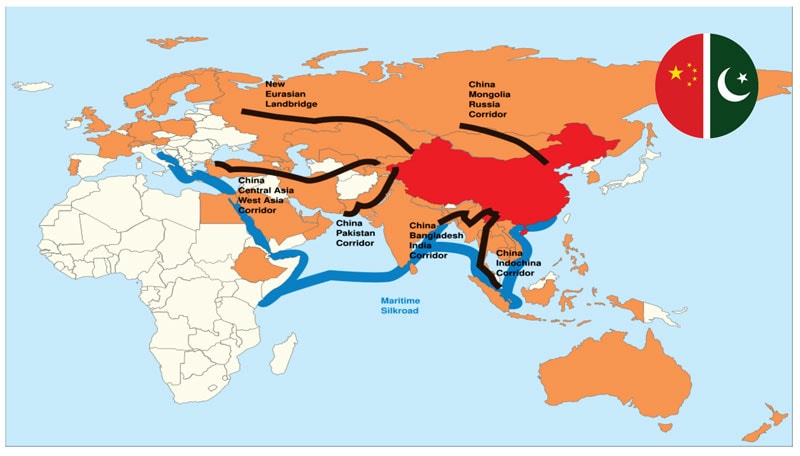Belt and Road cooperation has progressed from “sketching the outline” to “filling in the details”, delivering tangible and fruitful outcomes in the 11 years since the launch of the Belt and Road Initiative. To promote high-quality Belt and Road cooperation, the Export-Import Bank of China, as a financial institution dedicated to supporting China’s foreign trade and investment, and international economic cooperation, has taken all necessary measures. The bank has financed more than 4,000 kilometres of railways, 23,000 km of roads, 40 airports, and 30 ports in Belt and Road partner countries.
The China Eximbank has synergized with development plans of Belt and Road partner countries, so as to provide them with financial support according to their actual needs and resource endowments. It has rolled out reasonable financing plans to cater to both long-term interests and short-term benefits of the host countries. In this way, the bank has provided essential development funding, while avoiding increasing the debt burden of recipient countries, to facilitate sustainable growth.
The bank ensures that its funds are used where they are needed most. Backed by country-specific plans, it has supported key areas related to national development and people’s livelihoods, and managed to channel more financing toward sectors of productivity, including transportation, electricity and manufacturing, so as to help partner countries clear the development bottlenecks and build up growth momentum.
The China-Laos Railway, funded by China Eximbank, has helped Laos to open up to the outside world. With the bank’s support, Laos’ dream of becoming a land-linked country has come true. More than 40 million passenger trips have been made in the railway since operations started in December 2021. The railway has also facilitated import and export of more than 10 million tons of goods. In 2023, the trade volume between China and Laos reached $7.1 billion, up by more than 60 percent from 2021, showing the huge transportation potential unleashed by the railway.
We (at China Eximbank) remain committed to the principle of planning together, building together and benefiting together, and have deepened exchanges with financial peers at home and abroad. While looking up to advanced international standards and being drawn to useful experiences, we have forged synergy with Belt and Road partner countries in terms of concepts, policies, rules and standards. In particular, in our pursuit of green and sustainable growth, we have strictly followed green credit standards and helped enterprises develop, build and operate projects in line with international ecological and environmental protection principles and the regulations of host countries.
For instance, to reduce the environmental impact of the China Eximbank-supported Mombasa-Nairobi Standard Gauge Railway, we worked closely with the contractor and environmental experts to come up with a series of targeted measures. After research on the habitats and migration paths of wild animals, a total of 14 large wildlife crossings or corridors and 79 bridges were built, including corridors as high as 6.5 meters below the tracks for large animals such as elephants and giraffes.
According to a United Nations report, the global development funding gap is now estimated to be $4.2 trillion a year, and only a massive increase in financing will make it possible for developing countries to realize the Sustainable Development Goals. Scaling up financing requires cooperation among all parties. Hence, developed countries should honor their commitment of allocating 0.7 percent of their gross national income (GNI) to official development assistance, with international organizations, development-oriented and policy-backed financial institutions playing a leading and exemplary role. And more commercial funds and social capital should be mobilized to bridge the financing gap.
Over the years, China Eximbank has channelled more inclusive and accessible funds to promote Belt and Road cooperation through various means including syndication, on-lending, a combination of equity investment and loans, and third-party market cooperation. Take the large-scale FLNG (floating liquefied natural gas) project in Mozambique as an example. While the project has been jointly developed and operated by enterprises from China, Italy, the United States and Mozambique, China Eximbank and financial institutions from the Republic of Korea, Italy, France and other countries formed a syndicate to finance it. With such support, Mozambique has successfully transformed itself into an LNG exporter, with additional annual fiscal revenue estimated to be more than $400 million.
China Eximbank will host the 29th Asian Exim Banks Forum annual meeting in Shanghai from Tuesday to Thursday which will be attended by export credit agencies from Japan, the ROK, Thailand, Indonesia and other countries, as well as multilateral financial institutions such as the Asian Development Bank, the Asian Infrastructure Investment Bank and the New Development Bank. In so doing, we will provide a platform for in-depth exchanges on regional cooperation and global economic integration with the aim of forging consensus, and sharing opportunities.
Other than being funding sources, financial institutions can also act as intermediaries to share knowledge. In implementing projects, we should provide more knowledge support, apart from financial support, for host countries. By transferring advanced technologies and sharing know-how, we can help developing countries strengthen their production capacity and strengthen themselves from within.
In recent years, China Eximbank has held five senior executive training programs for its major partners apart from organizing other thematic training programs. In this way, we are sharing with our partners’ development concepts and experiences, allowing them to not only get the whole picture of China’s reform and opening-up, but also provide them with useful references to explore their own mode of development. (Courtesy: China Daily)
The author is chairman of the Export-Import Bank of China.










